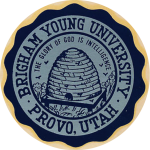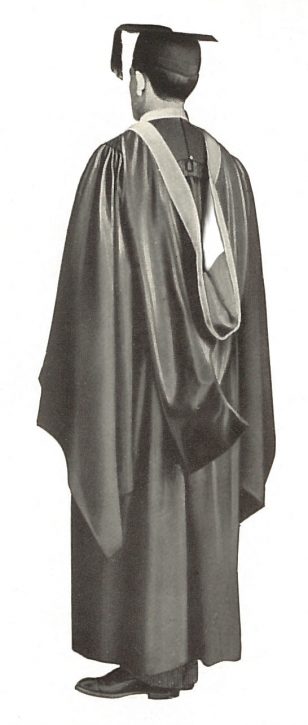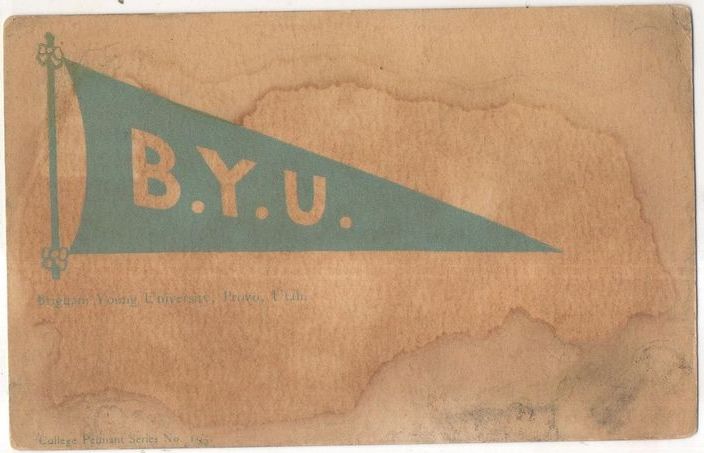Brigham Young University
Utah
1875




Students at Brigham Young University chose white and azure blue as their school colors in 1891. White symbolized purity and azure blue symbolized freedom, two values the students wanted to immortalize. In 1999, the university’s administration added tan as a third color and darkened the school’s azure blue to navy blue. Tan was never very popular with students, so after 2005 gray began to replace it.
Citations in the World Almanac (listed by cover date; color information is from the previous year): white/blue (1934-1935)



To avoid assigning duplicate hood linings to colleges and universities that used the same school colors, the Intercollegiate Bureau of Academic Costume (IBAC) used different types of heraldic patterns to divide the two or more colors in an academic hood. In IBAC lists from 1927 and 1948, a number of hood lining patterns were described as “[color] above [color]” or “[color] over [color]”, which referred either to a hood lining divided per chevron, per reversed chevron, or per bar. Unfortunately, today it is not usually known which of these three patterns the Bureau intended to describe.
IBAC lists from 1927, 1948, 1969, and 1972 all described the hood lining of Brigham Young University as white above azure blue, and the 1969 list helpfully clarified that the two colors are divided per chevron. Similarly, a list compiled by Kevin Sheard in Academic Heraldry in America (1962) described the university’s hood lining as white above blue, divided per chevron.